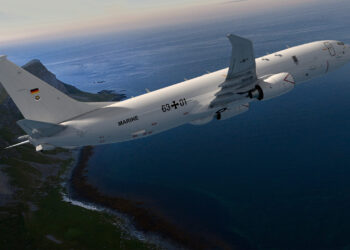US Navy,
MIAMI: Officials from the U.S. Navy, Marines Corps and Coast Guard participated in a symposium at the Biltmore Hotel in Coral Gables, Fla., Nov. 15, to present the new maritime strategy, known as “A Cooperative Strategy for 21st Century Seapower” – the first revision to the strategy since the height of the Cold War.
Miami was the first location in a series of national conversations with the country that will bring together a wide cross-section of American society to openly discuss the future roles of the Navy, Marine Corps and Coast Guard in protecting the homeland and working with global partners to prevent war.
More than 170 people from the Miami area, including business and civic leaders, participated in the event.
The new maritime strategy draws the three sea services closer together to provide a layered defense of the United States and is the first to be signed by all three service chiefs.
“Ever since 9/11 there has been greater cooperation between the Navy and the Coast Guard in performing their maritime missions and operations,” said Coast Guard Vice Adm. Brian Peterman, commander, Atlantic Area Command.
The strategy recognizes the economic links of the global economy and how any disruption due to regional crises-manmade or natural can have adverse impacts on the U.S. economy and quality of life.
Vice Adm. John Morgan, deputy chief of naval operations for information, plans and strategy, explained that 90 percent of the world's commerce crosses the oceans and world prosperity and security depend on the free use of the seas.
“Markets crave security and our vital interests are best served by a stable global system,” Morgan said. “The last strategy was developed in 1986 and the new strategy will meet emerging challenges in an uncertain world.”
The strategy provides the right balance of forces to conduct traditional combat missions while elevating the prevention of war to the same level as providing credible combat power to fight and win war. It is based on six expanded core capabilities of Forward Presence, Deterrence, Sea Control, Power Projection, Maritime Security and Humanitarian Assistance/Disaster Response.
“We have always responded in disaster relief, but now it's important to prepare, train and equip for missions in a preventive fashion,” said Cmdr. Bryan McGrath, branch chief with the Chief of Naval Operations Strategic Action Group. McGrath pointed to the USNS Comfort's (T-AH 20) trip through Central America and the disaster relief efforts in Haiti and Dominican Republic as examples of quick response operations.
Morgan explained to the crowd that working with other countries promotes international cooperation and partnerships that assist in global maritime security. He said, “Our actions around the world are aimed at preventing war by attacking the seeds that aim to cause war.”
The keynote speaker, Adm. James Stavridis, Commander, U.S. Southern Command, talked about the critical need for a new maritime strategy in a changing world.
“Maritime forces are the first line of defense to deploy quickly and react to different threats. At the end of the day it is the responsibility of the sea services to protect the waters, our homeland and to maintain economic stability throughout the world.”
By Mass Communication Specialist 2nd Class Joseph J. Olivares, Navy Operational Support Center Miami/Fleet Public Affairs Center Southeast









